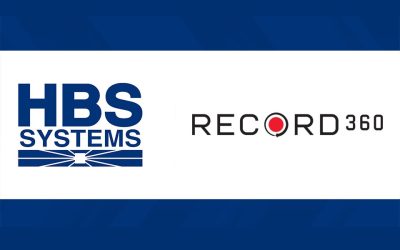HBS Systems, a leading provider of dealership management solutions for agricultural and heavy equipment dealerships, is excited to announce its latest integration with GleanQuote, an innovative quoting and proposal software. This partnership aims to streamline and...
Blog
Easy Tracking for Key Metrics of Your Equipment Dealership

For equipment dealerships to achieve success, it is essential that each department work together, communicate consistently, and have access to real-time data. This involves tracking both key and emerging metrics to optimize operations, strengthen customer satisfaction, and maximize profitability. These metrics provide data to establish baselines, benchmarks, and goals to allow you to track employee and department performance as well as your dealership’s overall success. In this blog post, we will discuss the significance of monitoring these metrics in every department of an equipment dealership.
The finance department is responsible for managing the dealership’s finances and ensuring profitability. It is also the department with a significant number of important metrics to track and monitor.
Revenue: The total amount of money generated from sales and related services. Important for understanding the overall performance and the dealership’s ability to generate income.
Gross Profit Margin: The percentage of revenue that remains after deducting the cost of goods sold. Important for accessing the profitability of departments and identifying areas for improvement.
Days sales outstanding: Average number of days it takes to collect payment from customers. Important for managing cash flow and identifying credit risks.
Debt to equity ratio: A measure of the dealership’s leverage, calculated by dividing total liabilities by total equity. Important for accessing financial stability and the ability to manage debt.
Return on investment: Measure of the profitability of the dealership’s investments. Important for assessing the effectiveness of business strategies and capital allocation decisions.
Working Capital: Measures the amount of funds a dealership has available to cover its day-to-day operations and meet short-term financial obligations.
The service department always plays a critical role in the overall profitability, reputation, and customer satisfaction of the dealership. The following metrics will help service managers track and analyze key performance to optimize their operations and profitability.
Service Revenue: Total revenue generated by the service department. A good indicator of overall success and its contribution to the dealership’s profitability.
Service Productivity Rate: Billable technician hours compared to total technician hours. A good indicator of how efficiently the service department is utilizing the workforce.
Gross Margin: The difference between the revenue generated by the service department and the direct costs, including parts and labor.
Labor Comeback Rate: Also referred to as the first-time fix rate, the total percentage of lost revenue completing additional repairs in regards to the original invoice amount.
Service Contribution to Total Sales: The percentage the service department contributes to overall revenue.
Being a department measured on the activity of assets, there are several unique metrics to track the productivity and returns those assets contribute to the department itself as well as the dealership.
Time Utilization Rate: The amount of rented time an asset or group of assets has versus the amount of available time an asset or group is available to rent. Important to gauge the demand and activity of certain assets and can be an important factor when adjusting rental rates.
Financial Utilization Rate: The percentage of revenue generated by an asset or group of assets compared to the total cost of the asset or group. Measures how effectively the rental department is utilizing its equipment to generate revenue. In using this metric, you can identify underutilized assets and groups.
Rental Revenue: Total revenue generated by the rental department. Indicator of the overall success of the department and can be used to track season and yearly trends.
Rental Gross Margin: The difference between the revenue generated by the rental department and the direct costs of repair, labor, depreciation, and other departmental costs.
Rate Variance Percentage: Adjusted rate periods by standard rental rates. Useful in determining how much variance occurs to secure rental reservations from the published rental rate.
There are several key metrics to track regarding how well the parts department is generating revenue, filling customer requests, and utilizing its inventory to best support positive cash flow.
Sales Revenue: Total revenue generated by sales within the department. You can use this metric to view the department as a whole or highlight specific vendors to track trends.
Inventory Turnover: Number of times that the parts inventory is sold and replaced over a given period. Important to determine how quickly the department is turning over the inventory as a whole or by specific vendors and managing its stock.
Gross Margin: Difference between the revenue generated by parts sales and their direct cost. Again, this can be viewed by the department as a whole or by highlighting specific vendors to track trends and performance.
Fill Rate: The percentage of part requests that are filled from inventory. Important in determining how well the department is meeting the demands of the customer and if they are well-stocked.
Parts Absorption Rate: The gross profit of the parts department divided by total dealership expenses. Indicates how efficiently the dealership is recovering its total costs and the percentage the parts department covers.
Fleet / Whole Good Sales Department
Metrics play an important role in whole good sales by ensuring margins are aligning with sell pricing, cash flow is not being tied up in slow-moving units and other performance indicators are being met.
Sales Revenue: Total revenue generated by the whole good sales department. Indicator of overall success and contribution to the dealership’s profitability. Establish trends by analyzing historical data.
Sales Volume: The number of units sold within a certain period. Used in determining the department’s ability to meet customer demand and maintain market share.
Whole Good Turnover: The number of times that the equipment inventory is sold and replaced over a given period. Important in determining how efficiently the department is managing its stock.
Units Contribution to Total Sales: The total sales of each model or type to the department’s overall sales. Helps identify stock level needs and calculate market share within a market.
By tracking these metrics, dealerships can make data-driven decisions to improve sales volume and revenue as well as establish historical trends and baselines. These metrics can also help the dealership keep pace with industry trends and ensure long-term success. A good equipment dealership management software should help you track key metrics in every department. Read our blog on How to Choose the Right Dealership Software for other features that will help you to ensure success at your dealership.
To learn how HBS Systems dealership management software can assist you in tracking key metrics in every department of your equipment dealership, call 800-376-6376, email sales@hbssystems.com, or click here to book a demo today.
Follow Us
Recent Press Releases
HBS Systems Earns Elite Status Kubota DMS Certification
HBS Systems, a leading provider of dealership management solutions for agricultural and heavy equipment dealerships, proudly announces its attainment of Elite Status in the prestigious Kubota Dealership Management System (DMS) Certification for 2024. This significant...
HBS Systems Announces Integration with Record360
HBS Systems, a leading provider of web-based equipment dealership management solutions is proud to partner with Record360, a digital inspection software that leverages photos and videos to record the condition of physical assets. This integration will provide dealers...



